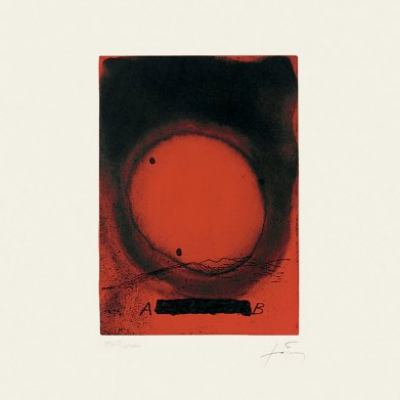
Details
Artist
Styles
Watercolor on handmade paper - Certificate from Archivio Alighiero Boetti, nº 10271 // Alighiero Boetti's Non parto non resto (Nove quadrati), created in 1979, is a unique watercolor composition on handmade paper that measures 19.5 x 19 cm. This artwork, with its pastel shades of yellow, pink, green, and lavender, combines lettered squares in a grid, forming words that evoke the Italian phrase 'Non parto non resto,' meaning 'I do not leave, I do not stay.' The piece exemplifies Boetti's fascination with language, pattern, and symmetry, as well as his exploration of dualities and paradoxes in human experience. The irregular edges of the handmade paper enhance its organic feel, juxtaposed against the geometric arrangement of letters. The piece holds a certificate from Archivio Alighiero Boetti, No. 10271.
Non parto non resto (Nove quadrati), 1979
form
Medium
Size
19.5 x 19 cm
- Inches
- Centimeters
Edition
Price
Details
Artist
Styles
Watercolor on handmade paper - Certificate from Archivio Alighiero Boetti, nº 10271 // Alighiero Boetti's Non parto non resto (Nove quadrati), created in 1979, is a unique watercolor composition on handmade paper that measures 19.5 x 19 cm. This artwork, with its pastel shades of yellow, pink, green, and lavender, combines lettered squares in a grid, forming words that evoke the Italian phrase 'Non parto non resto,' meaning 'I do not leave, I do not stay.' The piece exemplifies Boetti's fascination with language, pattern, and symmetry, as well as his exploration of dualities and paradoxes in human experience. The irregular edges of the handmade paper enhance its organic feel, juxtaposed against the geometric arrangement of letters. The piece holds a certificate from Archivio Alighiero Boetti, No. 10271.
- Recently Added
- Price (low-high )
- Price (high-low )
- Year (low-high )
- Year (high-low )
Alighiero Boetti
Non Parto Non Resto (Nove Quadrati), 1979
Drawing / Watercolor
Watercolor
Inquire For Price
What is Arte Povera?
A movement and style in art that originated in Italy during the 1960s. It integrates elements of minimalism, performance art, and conceptual art by using everyday or seemingly worthless materials, such as newspapers, stones, or rags. The goal was to challenge and subvert the commercialization of art.













